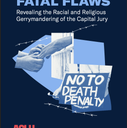A recent RAND Corporation study of the federal death penalty from 1995 to 2000 found no evidence of racial bias. Even though the investigators found that the death penalty was more often sought against defendants who murdered white victims, researchers ultimately concluded that the characteristics of the crime, and not the racial characteristics of the victim or the defendant, could be used to make accurate predictions of whether federal prosecutors would seek the death penalty. The RAND study examined the files of 652 defendants who were charged with capital offenses while Janet Reno was U.S. Attorney General (between January 1, 1995 and July 31, 2000).
“Our findings support the idea that race was not a factor in the decision to seek the death penalty once we adjusted for the circumstance of the crime,” noted Stephen Klein, a RAND senior research scientist and co-leader of the project.
The authors of the study noted its limitations:
[T]he three teams agreed that their analytic methods cannot provide definitive answers about race effects in death-penalty cases. Analyses of observational data can support a thesis and may be useful for that purpose, but such analyses can seldom prove or disprove causation.
…
In summary, given the inherent problems in using statistical models under these circumstances, our results need to be interpreted cautiously. There are many reasonable ways to adjust for case characteristics, but no definitive way to choose one approach over another. Bias could occur at points in the process other than the ones studied, such as the decision by federal prosecutors to take a case. Results could be different with other variables, methods, and cases. Extrapolating beyond the data we analyzed here to other years, other defendants, other points in the decisionmaking process, or other jurisdictions would be even more problematic.
(Executive Summary).
The RAND report notes that U.S. attorney offices in the South forwarded the majority of the 652 cases sent to Reno for review, and this region accounted for about half of the recommendations to seek the death penalty. After reviewing the cases, Reno decided to seek the death penalty for 25% of the 600 defendants she considered. Approximately 50 defendants reached plea agreements after their cases were submitted by U.S. attorneys, but before the attorney general made a decision about whether to seek the death penalty. Most of the homicide cases that were studied were within the same racial group. For example, white defendants were more likely to kill white victims than African Americans or Hispanics.
(RAND Corporation Press Release, “RAND Study Finds No Evidence of Racial Bias in Federal Prosecutors’ Decisions to Seek Death Penalty From 1995 – 2000”). Read the study.
See Federal Death Penalty, Arbitrariness, and Race. At present, there are 44 defendants in the federal system who have received a death sentence – 59.1% are members of a minority race. Most murders in the U.S. do not enter into the federal system because a decision is made to allow for state prosecution.

